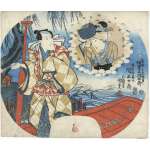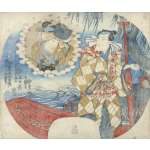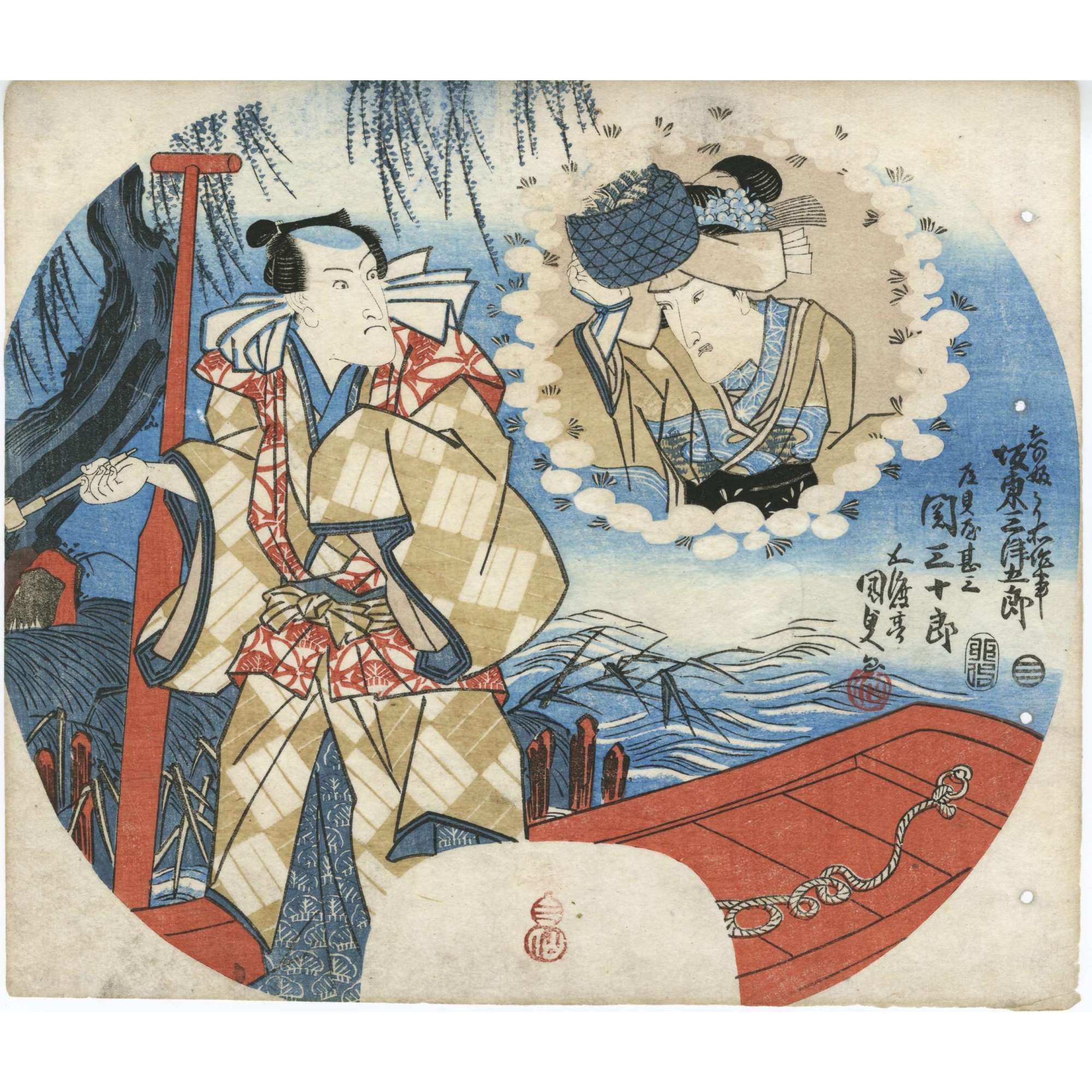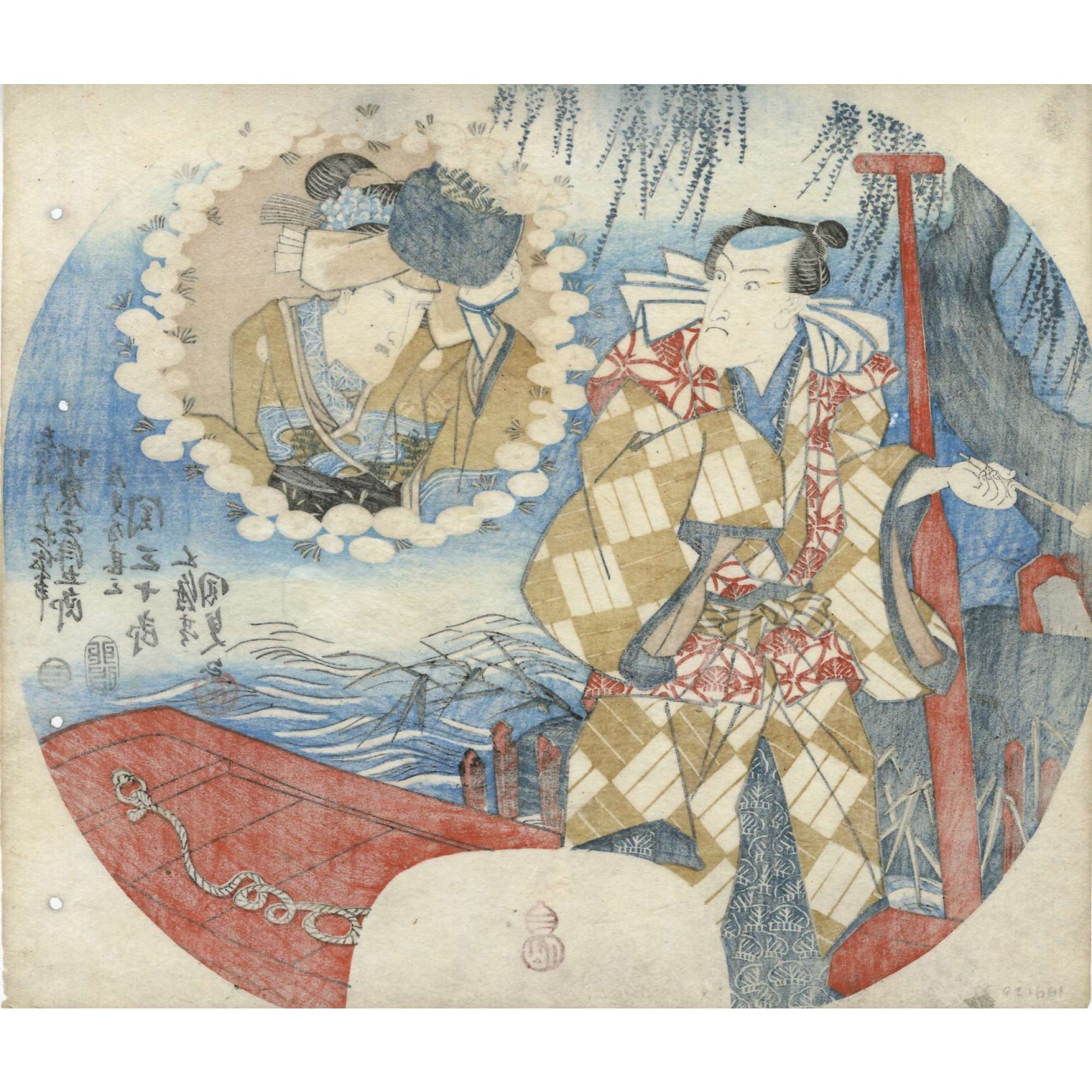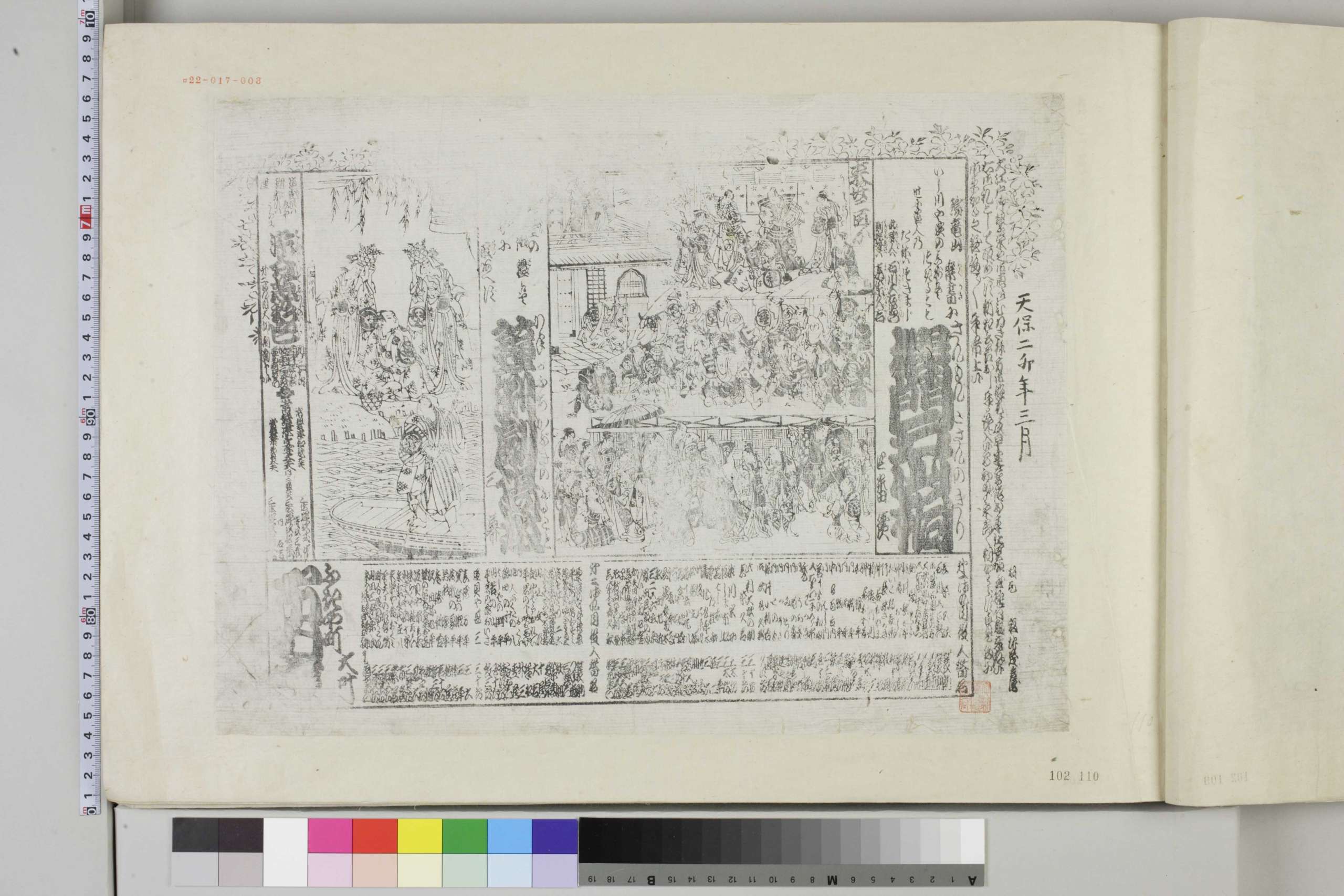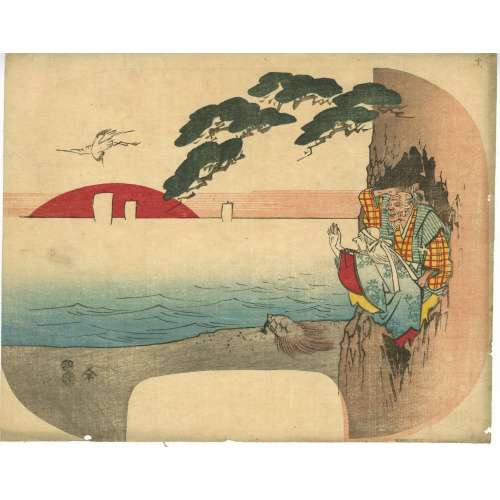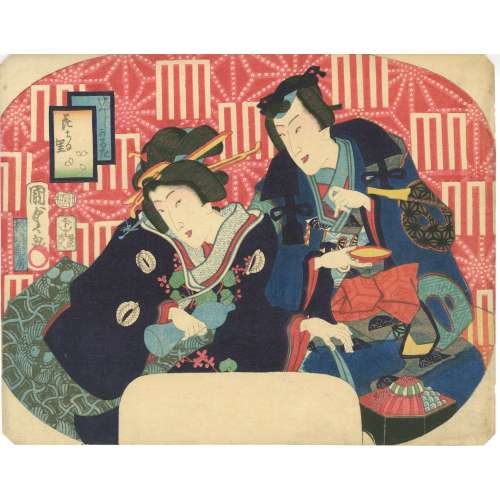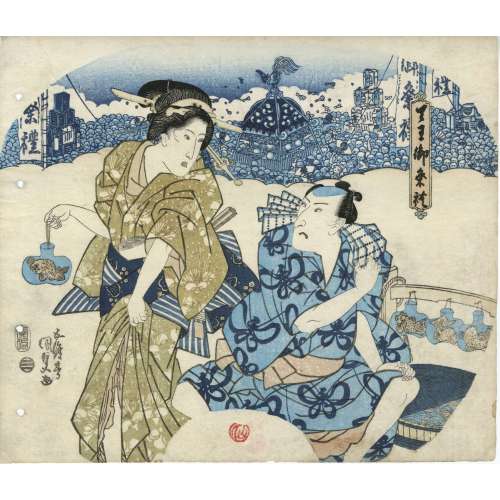Artist: Utagawa Kunisada [歌川 国貞] a.k.a. Utagawa Toyokuni III [三代歌川豊国] (Japanese, 1786–1865).
Signed: 五渡亭国貞画 (Gototei Kunisada ga)
Publisher: Ibaya Senzaburō [伊場屋仙三郎] (Japanese, fl. c. 1820–1850)
Date-Aratame Seal: 辰改 (Tenpō 2 [1831], 3rd month)
Media: Aiban yoko-e uchiwa-e (団扇絵), color woodblock print, 225 × 266 mm
Actors and Roles:
- Bandō Mitsugorō III [三代目 坂東 三津五郎] (Japanese, 1775–1831); other names: Bandō Minosuke I, Morita Kanjirō II, Bandō Mitahachi I, Bandō Minosuke I, Bandō Mitahachi I.
- Played Nowaki-hime no Yūkon (野分姫のゆうこん), disguised as a Shinobu seller (しのふ売り).
- Seki Sanjūrō II [関三十郎] (Japanese, 1786–1839); other names: Seki Utasuke I, Nakamura Utasuke, Arashi Sōtarō.
- Played Watashimori Jinzō (渡し守甚三), a ferryman, also referred to as Dōguya Jinza (道具屋甚三), a merchant.
Play: Somewake te Shinobu no Irozashi (染分忍彩色)
Theatre: Ichimura-za, Edo, 3rd month of 1831
Full-length view of Seki Sanjūrō II as Watashimori Jinzō, standing under a weeping willow inside a boat or ferry, holding a wooden ladle in his right hand. He wears a checkered kimono with alternating olive and white squares, symbolizing the divining rod (sangi, 三木). His inner kimono is blue with stylized pine motifs; over this, he wears a haori decorated with shippo (七宝) and pines. A long wooden oar reinforces his role as a ferryman. Reeds growing near the riverbank and mooring stakes (kui, 杭) suggest a ferry dock or landing point.
In the upper right, within a cloud-shaped inset, Bandō Mitsugorō III, as Nowaki-hime no Yūkon, is depicted in disguise as a Shinobu seller, carrying a basket filled with dyed textiles on her head. She is not physically present but rather an imagined or longed-for figure in Jinzō’s thoughts. She wears a blue and beige checked kimono with a black obi, evoking the image of a noblewoman travelling in disguise.
We examined multiple documents from the Waseda University database, specifically related to the kabuki program at Ichimura-za in Edo on March 22, 1831 (Tenpō 2, 3rd month):
- Tsuji banzuke (辻番付, street playbill) – A printed advertisement listing the plays and performers.
- Yakuwari-bon (役割本, role listing) – A document detailing actor-role assignments.
- Illustrated playbill pages – Containing scenes from the performances.
- Crest record (kamon, 家紋) – Indicating actor affiliations.
Performance Overview
- Theater: Ichimura-za, Edo
- Date: March 22, 1831 (Tenpō 2, 3rd month)
- Plays Performed:
- 楼門五山桐 (Rōmon Gojō no Kiri) – A historical drama (jidaimono), possibly the first-ranking large performance (ichibanme ōdai, 一番目大切).
- 鐘渕劇場故 (Kanegafuchi Shibai no Furugoto) – Likely a domestic drama (sewamono) forming the middle section of the program.
- 染分忍彩色 (Somewake te Shinobu no Irozashi) – A second-ranking large performance (nibanme ōdai, 二番目大切), potentially a concluding dance (shosagoto, 所作事).
The print commemorates a performance in the third month of 1831, one of the last appearances of Bandō Mitsugorō III before his death later that year.


